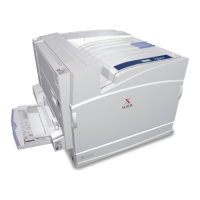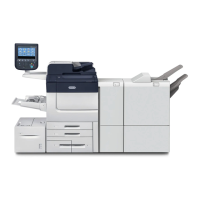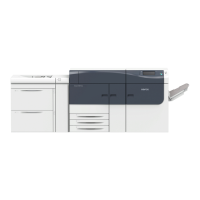HOST FORMS DESCRIPTION LANGUAGE
bit Binary digit. Smallest unit of information recognized by a
computer. Numeric digits of 1 or 0 represent the binary scale of
notation. In computers and related devices, the binary numeric
values can be represented by a positive or negative electrical
pulse. As a general rule, 1 equals ON, TRUE, or YES; and 0
(zero) equals OFF, FALSE, or NO. A number of bits strung
together can represent a character to the computer.
Multipliers of the bit are as follows:
• 1 or 0 byte = 8 bits
• 1 kilobyte (KB) or 1,024 bytes = 8,192 bits
• 1 megabyte (MB) or 1,048,576 bytes = 8,388,608 bits.
Computer space equivalents (in KB) are as follows:
• 1.5 KB = about one single–spaced typed page
• 30 KB = about 20 typed pages
• 150 KB = about 100 typed pages.
bitmap Visual representation of graphic images in which a bit defines a
picture element (pixel). For example, if a bit is 1, the
corresponding pixel is printed.
bitmapped Display image generated bit by bit for each point or dot. A
software–driven scanner is used to create characters and
graphics.
blocking Process of combining two or more records into a single block of
data, which can be moved, operated upon, stored, and so on, as
a single unit by the computer.
block length Number of characters or bytes contained in a block of data. The
block is treated as a unit in the computer. Block lengths may be
specified in units such as records, words, computer words, or
characters.
boot To load initial operating instructions for a program into the
memory of the computer. These instructions direct the loading
of the rest of the program. Booting may require the entry of a
few commands or keystrokes (soft boot) or the turning on of a
switch to begin the process (hard boot).
buffer Compartment of memory in which data is stored during transfer
from one device to another.
byte Fixed number of bits operated upon as a unit (in data processing,
usually 8). A byte may represent a character, a machine
instruction, or some other logical unit of information.
carriage return Control character that causes the printing system to start printing
at the left margin of the current line (unless set to be interrupted
as a line end).
centralized printer Class of Xerox printers that includes the 4050, 4090, 4135, 4650,
4850, 4890, 8790, and 9790 printers. Centralized printers are
frequently placed in a central location to handle a large volume
of output.
channel 1. In data communications, path or line that allows two or more
devices to communicate. 2. In computers, a path for
communication between the central processing unit (CPU) and
peripheral devices.
character Single printable letter (A to Z), numeral (0 to 9), symbol (& % #),
or punctuation marks (, . ! ?) used to represent data. Characters
can also be nonprinting, such as a space, tab, or carriage return.
GLOSSARY–2 HOST FORMS DESCRIPTION LANGUAGE 3.2 FOR IBM MVS CREATING FORMS
